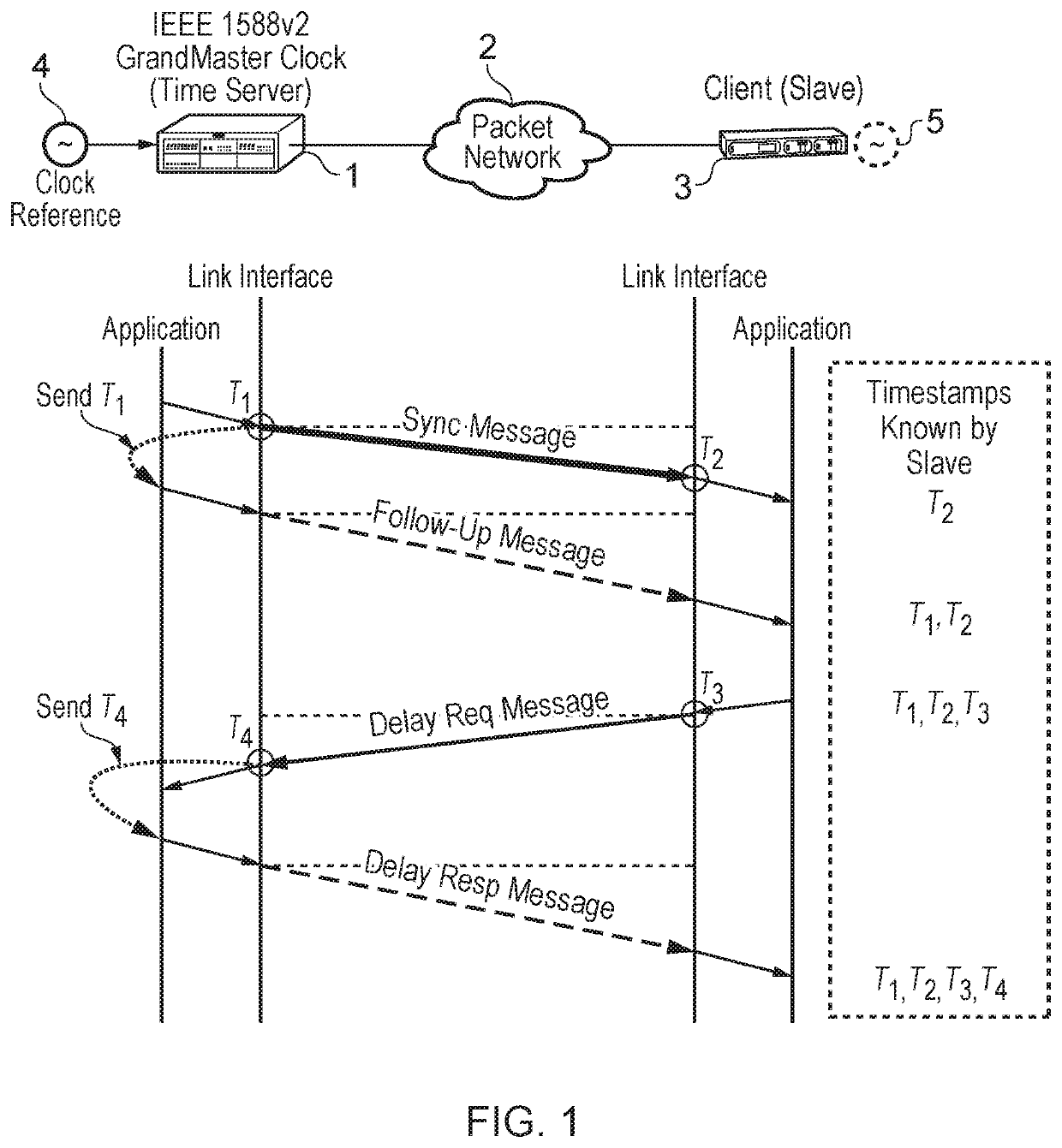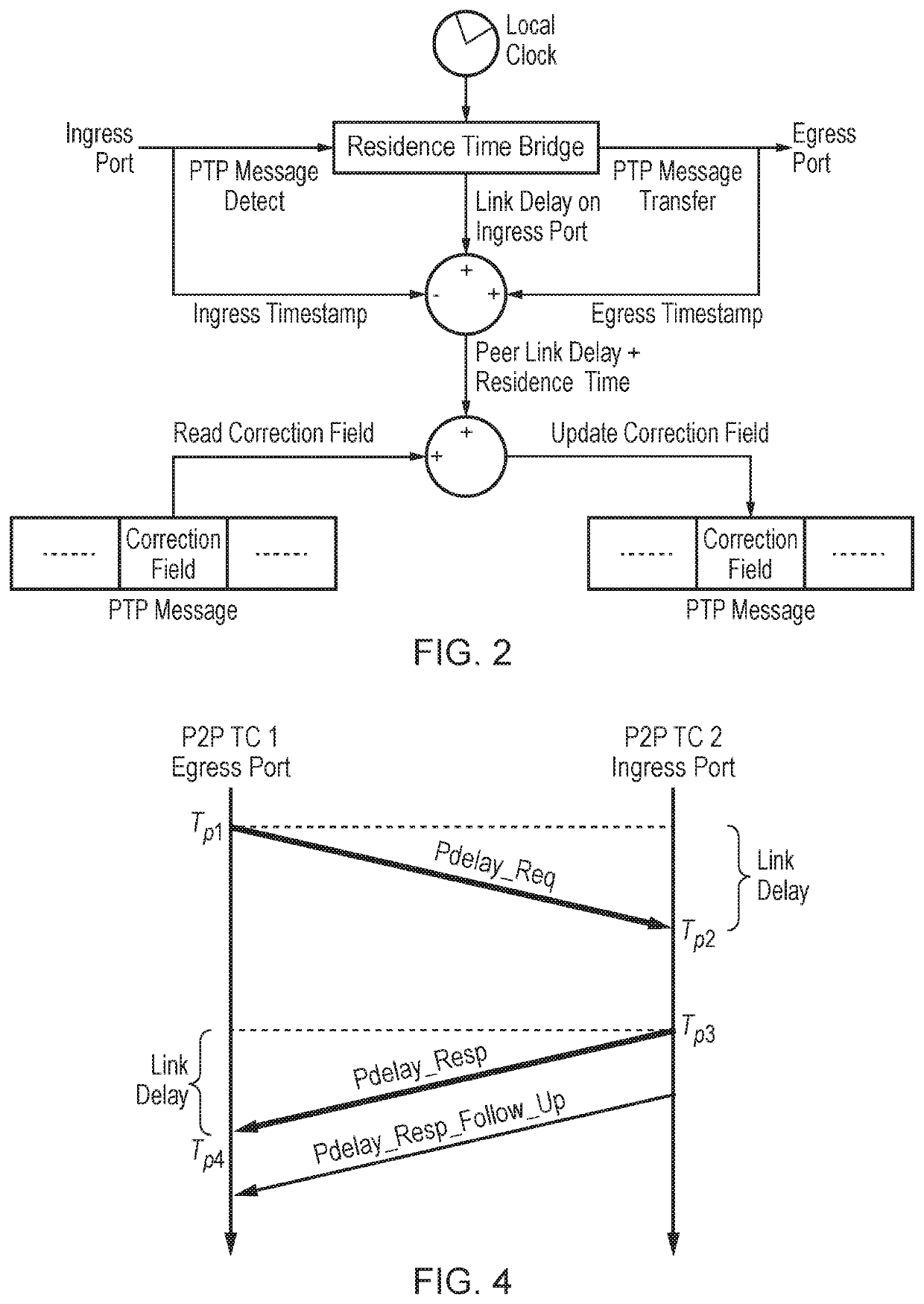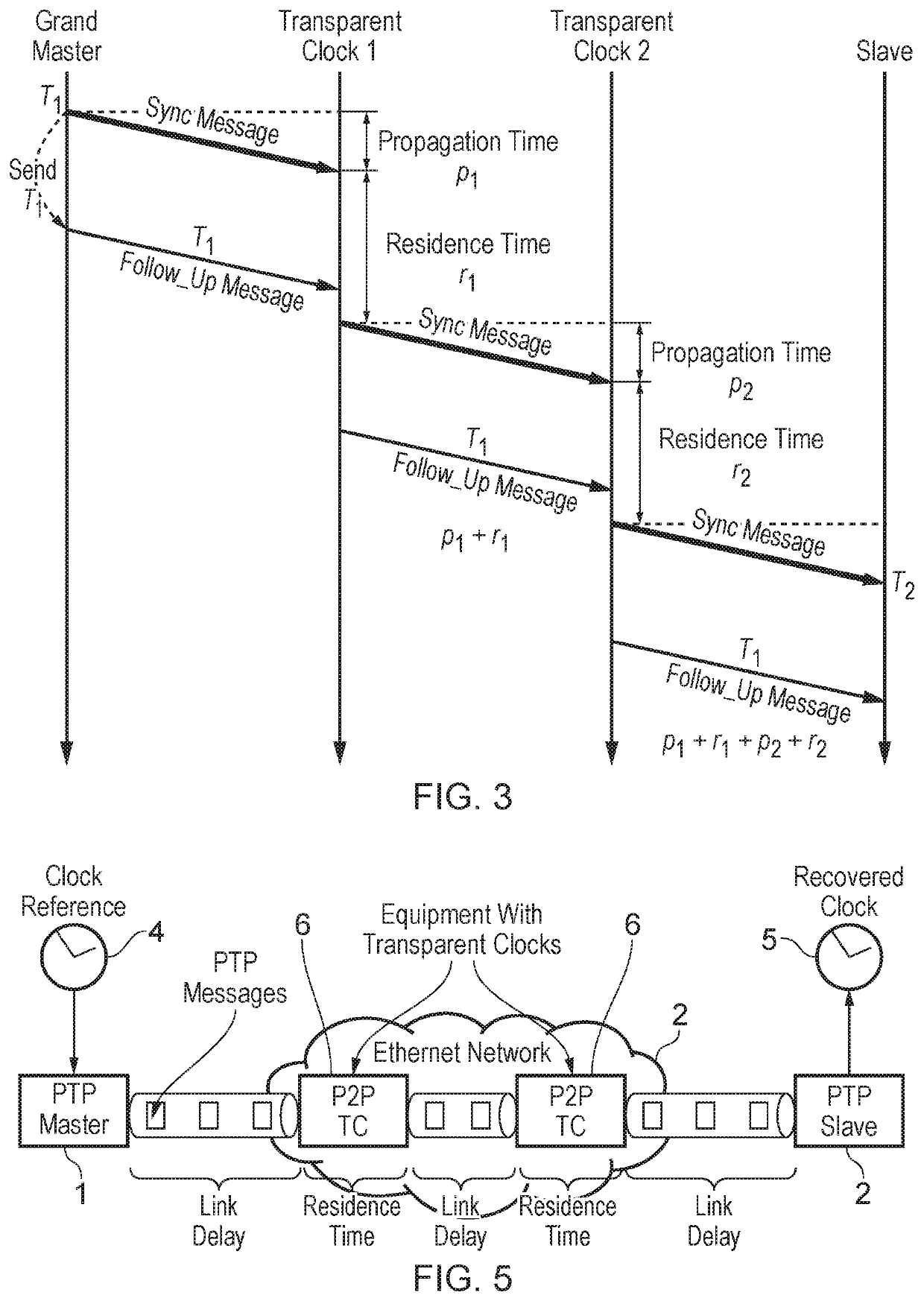Peer-to-peer transparent clocks and methods of estimating skew in peer-to-peer transparent clocks
a technology of transparent clocks and transparent clocks, applied in the field of peer-to-peer transparent clocks and methods of estimating skew in peer-to-peer transparent clocks, can solve the problems of inability to apply over networks (even ethernet), inaccurate residence time measurements, and inability to provide accurate syntonization
- Summary
- Abstract
- Description
- Claims
- Application Information
AI Technical Summary
Benefits of technology
Problems solved by technology
Method used
Image
Examples
Embodiment Construction
[0054]At their broadest, aspects of the present invention provide for methods and systems for estimating the skew of a local clock in an peer-to-peer transparent clock device using information from timing messages passing between a master and slave device through that transparent clock device.
[0055]A first aspect of the present invention provides a method of estimating the skew of a local clock in a peer-to-peer transparent clock device connected in a network between a master device having a master clock and a slave device, the method including the steps of: sending timing messages from the master device to the slave device over the network, the timing messages passing through said transparent clock device; recording times of sending of said timing messages by the master device; extracting, in the transparent clock device, from timing messages sent from the master device to the slave device, the times of sending of said timing messages; recording the times of receipt by the transpar...
PUM
 Login to View More
Login to View More Abstract
Description
Claims
Application Information
 Login to View More
Login to View More - R&D
- Intellectual Property
- Life Sciences
- Materials
- Tech Scout
- Unparalleled Data Quality
- Higher Quality Content
- 60% Fewer Hallucinations
Browse by: Latest US Patents, China's latest patents, Technical Efficacy Thesaurus, Application Domain, Technology Topic, Popular Technical Reports.
© 2025 PatSnap. All rights reserved.Legal|Privacy policy|Modern Slavery Act Transparency Statement|Sitemap|About US| Contact US: help@patsnap.com



